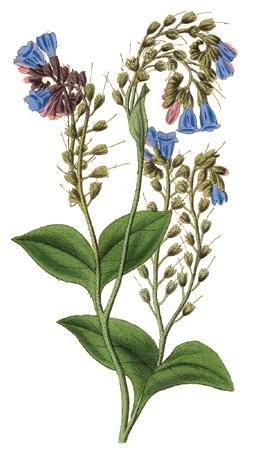Symphytum

Symphytum is a genus of flowering plants in the borage family, Boraginaceae. There are up to 35 species,[1] known by the common name comfrey (pronounced /ˈkʌmfri/). Some species and hybrids, particularly S. officinale and S. × uplandicum, are used in gardening and herbal medicine. They are not to be confused with Andersonglossum virginianum, known as wild comfrey, another member of the borage family.[2]
The Russian comfrey ‘Bocking 14’ cultivar was developed during the 1950s by Lawrence D Hills, the founder of the Henry Doubleday Research Association (the organic gardening organisation itself named after Henry Doubleday, who first introduced Russian comfrey into Britain in the nineteenth century) following trials at Bocking, Essex.[4]
Folk medicine names for comfrey include knitbone, boneset, and the derivation of its Latin name Symphytum (from the Greek symphis, meaning growing together of bones, and phyton, a plant), referring to its ancient uses. Similarly, the common French name is consoude, meaning to weld together. The tradition in different cultures and languages suggest a common belief in its usefulness for mending bones.
Comfrey contains mixed phytochemicals in varying amounts, including allantoin, mucilage, saponins, tannins, pyrrolizidine alkaloids, inulin, and proteins, among others.[6] Liver toxicity is associated with consuming this plant or its extracts.[6] In modern herbalism, comfrey is most commonly used topically.[6][7][8]
In 2001, the United States Food and Drug Administration issued a ban of comfrey products marketed for internal use, and a warning label for those intended for external use.[9][10] Comfrey is particularly contraindicated during pregnancy and lactation, in infants, and in people with liver, kidney, or vascular diseases.[6][11]
